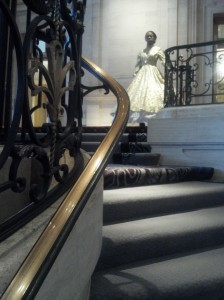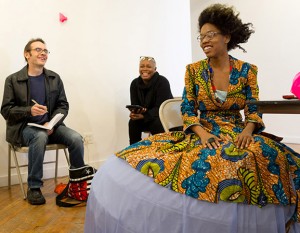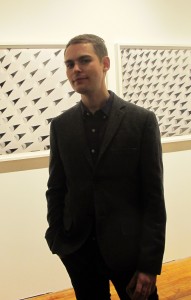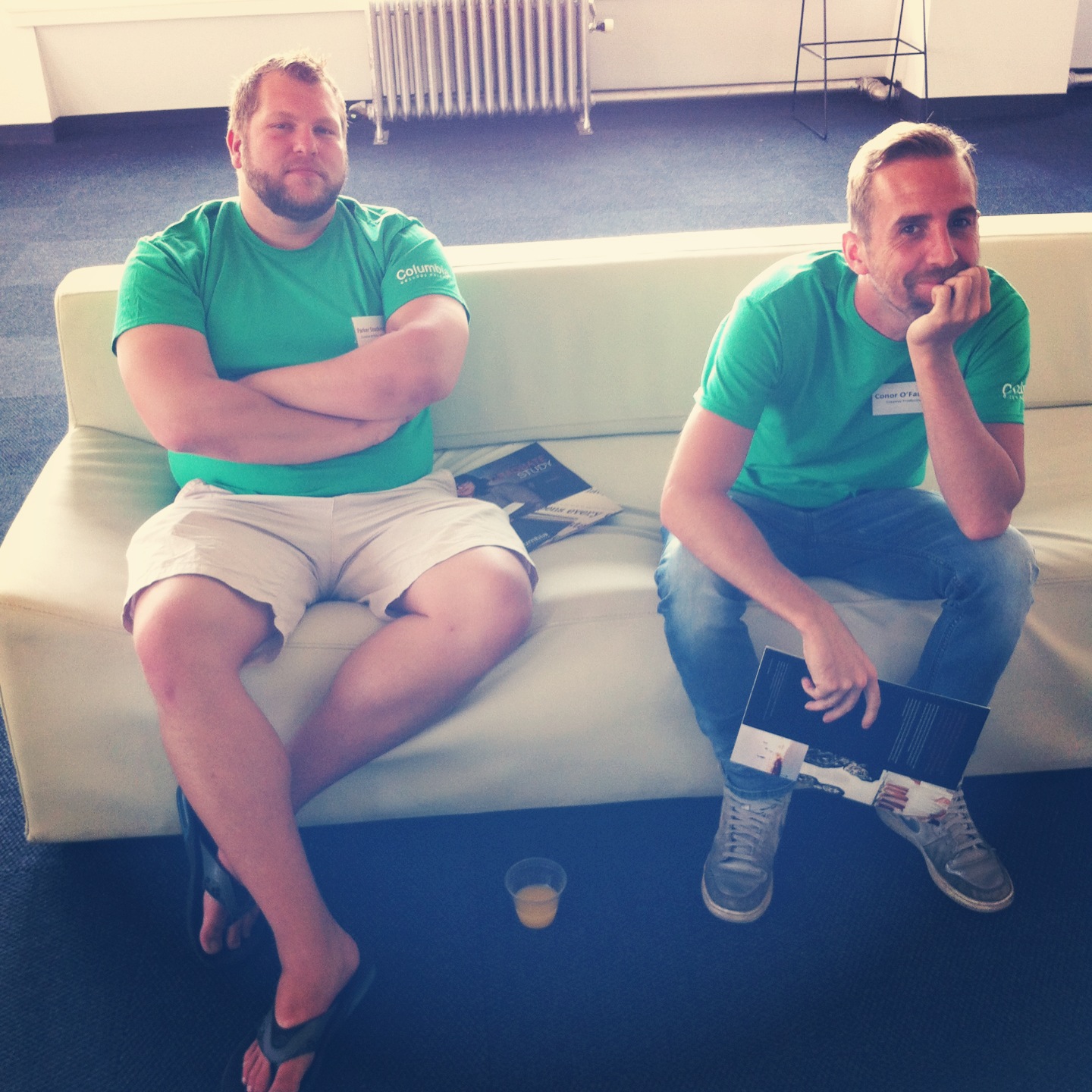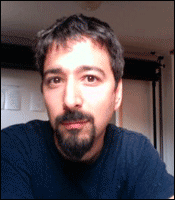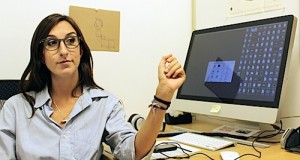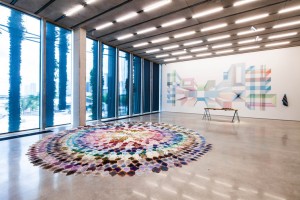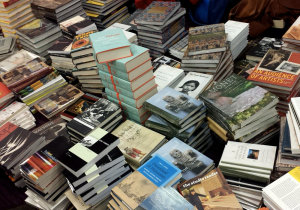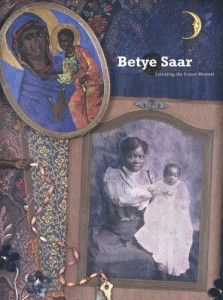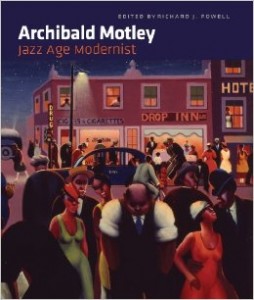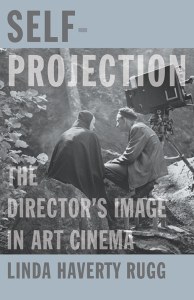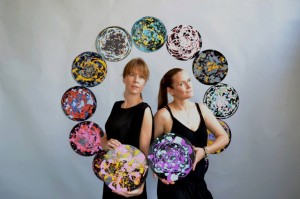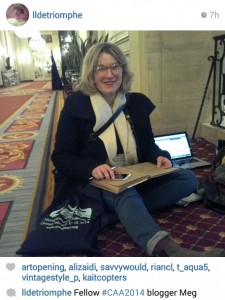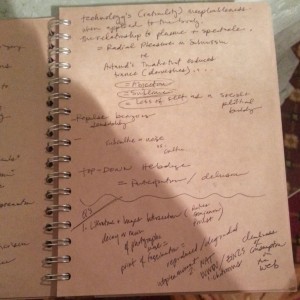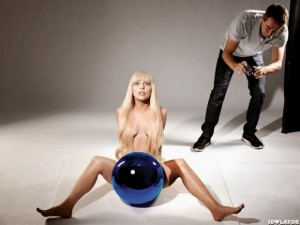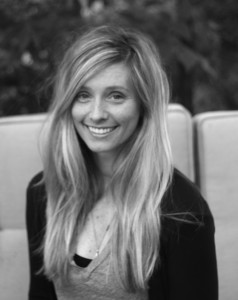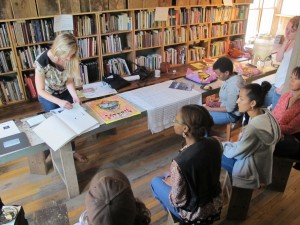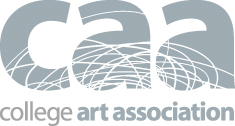It is day 3 here at CAA. After sitting in on tons of presentations with thoughtful Q&A sessions, I found a moment for another kind of looking. Sitting on the second floor near the Grand Ballroom of the Chicago Hilton (I’ve found this to be my most productive spot for writing and thought gathering) peering through the bannister… people watching essentially, a young woman ascends the staircase in a dress that a bit out of place for the lobby. She stops and poses for the camera/cameraman accompanying her. I watched people watching her, taking photos themselves, and the cameraman (which I learned to be her partner) taking photos of them. This was an interesting shift of gears from sessions.
I watched for several minutes before leaning over the bannister to greet her hello. When I was made aware this was a performance, I decided to pull her aside for a quick interview
La Keisha Leek: Tell me your name and a little bit about your practice.
Fatima White: My name is Fatima White and I’m from New York. My practice right now is about beauty. I’m working on a project called Beauty and Reflections. It’s about the reflection you see in the mirror, and reflecting that on the outside. It’s one part visual and one part performance. I create pieces to wear as well as wear vintage recyclable dresses out in public and pretty much reflecting me. I am a huge fashionista and I love costumes and theatrics.
LL: What is your background?
FW: My background is in painting. I have a bachelors in fine arts and arts education with a focus on painting and anthropology. My work is mixed media, with fabric, cloth and all type of material. But I also like fashion. In undergrad I did a fashion show and painting show every year. So when I get to my MFA I realized my project would be about fashion. Now I’m at this MFA program called Transart Institute. They actually had a couple of sessions here. It’s a Low-Residency MFA program based out of the UK, but we have classes and residencies in Berlin and Brooklyn every year. I’ll be in Berlin this summer. This will be my second year in the program and then I’ll have one more year in the MFA program Creative Practice.
LL: What brought you to CAA, was it specifically for this performance to prepare for the Berlin residency?
FW: It was to prepare for the residency, but I’m also an educator, and I work at the African American Museum in Long Island. So I wanted to come here for museum studies as well as other things that related to my practice. There are different sessions on fashion and public art that I want to see.
I also wanted to learn a lot more and meet new people and network. And I drew attention with my dress; otherwise I wouldn’t have met you! Everybody here’s an artist or loves art in some way. I decided to wear art on the outside today.
LL: In what ways does CAA’s annual conference beneficial for emerging art historians, curators and artists?
FW: I think it’s important to meet other people in the field because that’s the only way you learn. In my career in museum education, meeting new people in the arts, learning from other artist, art historians and professors, was how I was able to do learn how to do what I do within museums. I did an internship at the Brooklyn Museum working part-time with their Hands-On Art Saturday. I learned a lot from the Brooklyn Museum and it was only a fall internship, but I kind of wanted to have more of that, so that’s why I came here. I want to always stay immersed in the arts, especially on the collegiate level.
LL: What exhibitions or programs going on during CAA are you looking forward to attending while in Chicago?
FW: Inspiring Beauty: 50 Years of Ebony Fashion Fair at the Chicago History Museum
It is day 3 here at CAA. After sitting in on tons of presentations with thoughtful Q&A sessions, I found a moment for another kind of looking. Sitting on the …

